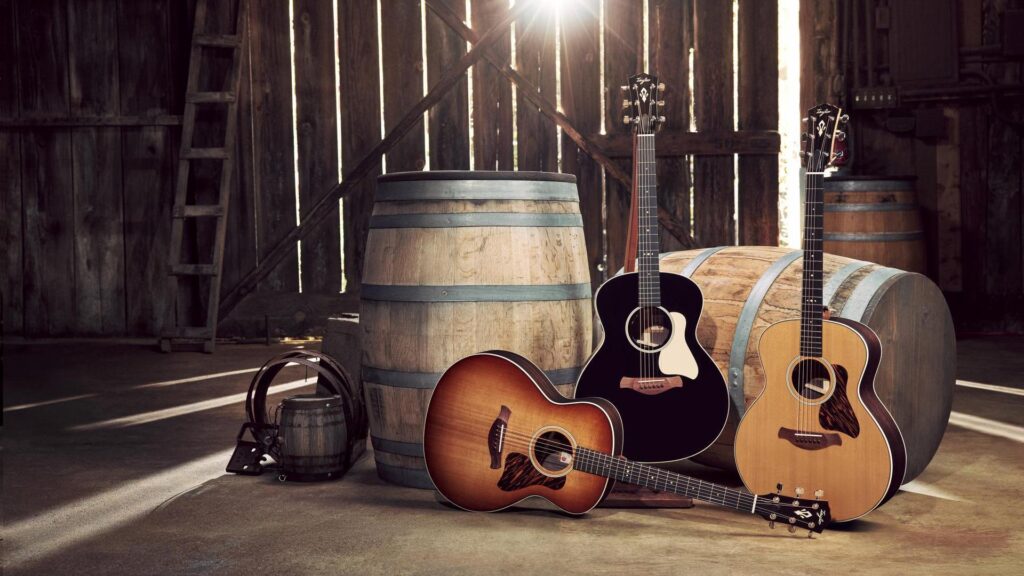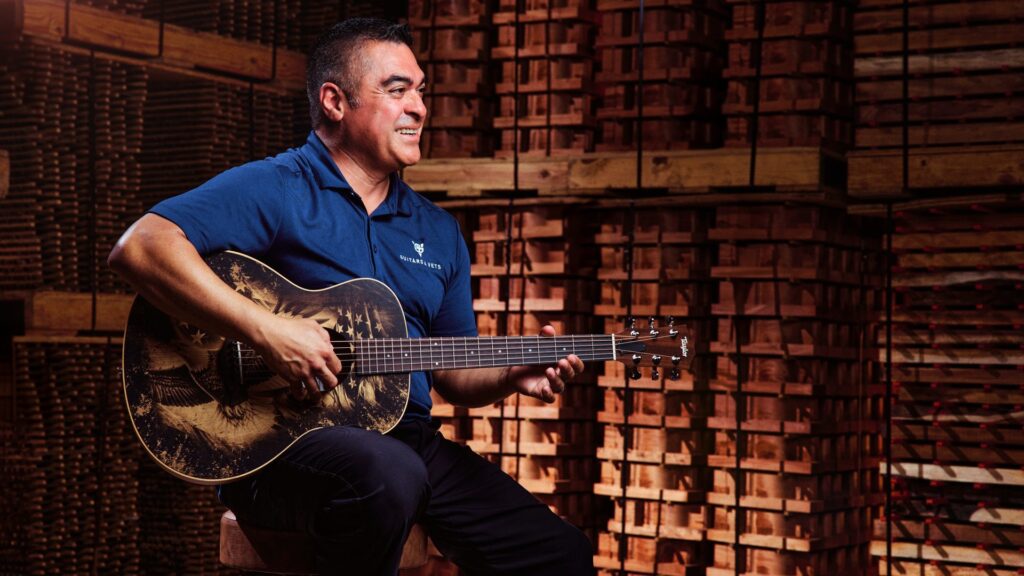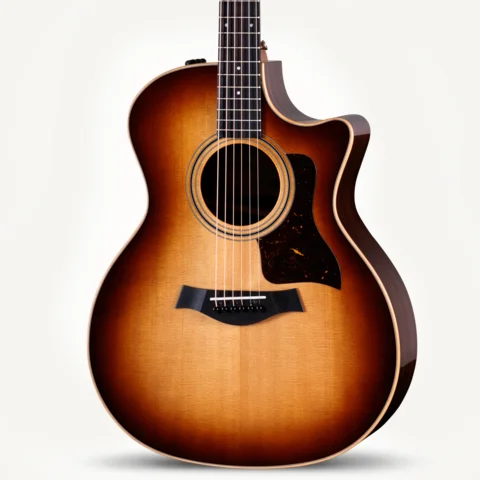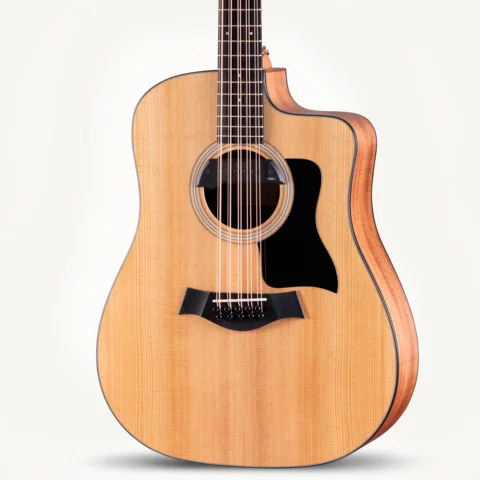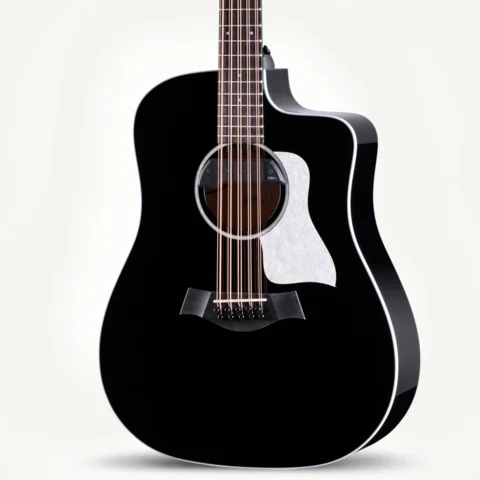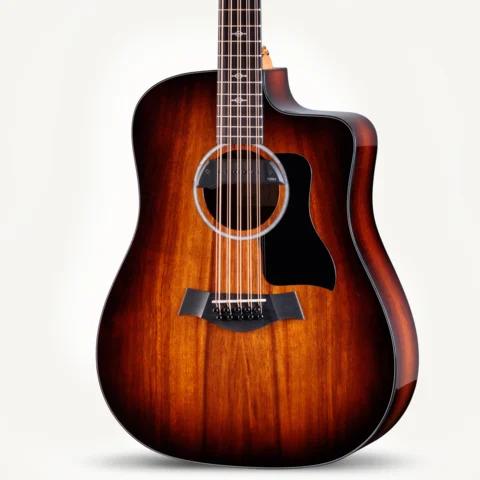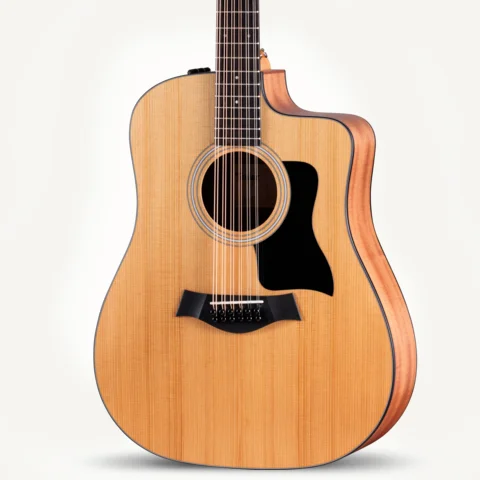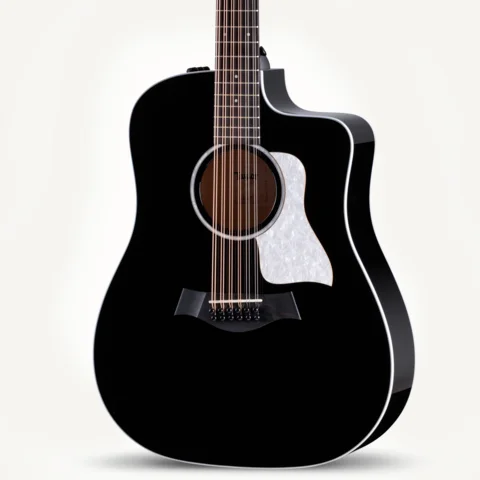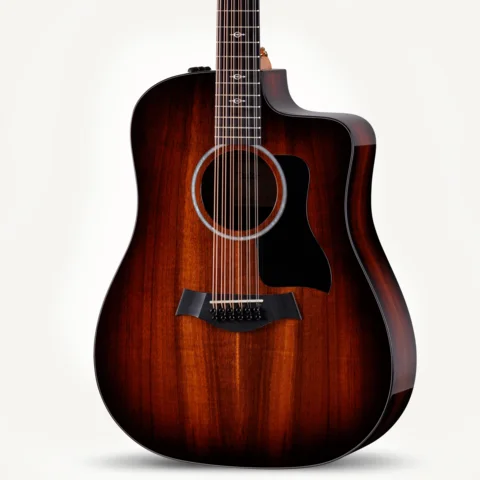We love to share our perspective on tonewood nuances with guitar enthusiasts. The better your understanding of the unique sonic characteristics that distinguish different woods, the easier it is to find the right type of guitar for your playing style and needs. We recently received a wood question from Taylor enthusiast Mike West via Taylor’s Facebook page, so we asked Taylor master luthier Andy Powers to respond. Andy’s reply touches on several popular tonewoods, and we’re happy to share the question and Andy’s reply below.
How would the tonal qualities of Macassar ebony be compared to maple, mahogany or East Indian rosewood?
I’ll start by saying the recipe we know as “tone” is comprised of a bunch of complex ingredients, and depending on the guitar design and the combination of the elements, the unique qualities a certain wood will add to the mix will change a little based on context.
That said, a few generalizations can be made. Macassar ebony has roughly the same hardness as many rosewood family woods. It can be a little heavier at times, but not necessarily so. Its response will essentially be similar to that of a rosewood like East Indian. However, it has a particular stiffness and grain structure that results in a certain low-frequency dampening. This translates into a rich, complex, and noticeably ringing overtone series that doesn’t get swallowed up by a bunch of low-end overtones. That’s why our ears hear the upper ringing overtones so distinctly — they are not being masked by the lower ones.
Most rosewood family timbers have a fast sound transmission speed and almost no internal dampening. This translates into an overtone-rich, almost saturated kind of sound, and gives rosewood its tonal identity, featuring a bell-like attack and a rich, high-fidelity ring.
Mahogany is another matter entirely. Mahogany has a completely different weight and stiffness with a unique dampening factor. Mahogany yields what I call a fundamental, strong sound. Many of the high upper partials, or overtones, are very subdued because of the internal dampening. The result is a guitar that delivers the notes we play, with fewer of the extra, overtone notes. This makes for a very clean and direct sort of sound. You might describe the sound as dry, woody, warm (depending on the top you combine it with) or even focused or punchy. It responds with the notes you play, and little else.
The maple family of woods offers a wide range of responses, influenced by where in the world the tree grew. In a nutshell, the primary sonic quality maple is known for is its linearity — it has very predictable dampening and stiffness factors that make it the most transparent-sounding wood. It reflects exactly what the design and the player bring to it. If you make a warm-sounding instrument and play it warmly, it sounds warm. If it is a bright and trebly guitar and played brightly, it will reflect that. It is this linear personality that endears the wood to the bowed instrument world.
So, in the end, you can see it really isn’t a matter of more bass or more treble. Wood characteristics are more like seasoning that influence the voice of an instrument by flavoring it with their own qualities.
The video below demonstrates the differences in woods on our Grand Orchestra body shape.



























